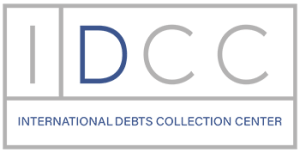In the depths of global financial turmoil, where uncertainty reigns supreme, the specter of the International Debt Crisis looms ominously, taunting economies near and far with its ruthless tactics. Its presence sends shockwaves through the delicate balance of power, exposing the grim reality facing nations.
So, what are these clandestine maneuvers? Who are the architects of this economic maelstrom? Brace yourself for an eye-opening journey, as we delve into the dark, perplexing depths of this intricate web of financial entanglement. Prepare to be mesmerized, intrigued, and perhaps even unnerved, as we unveil the shocking truth behind the ruthless tactics employed in the International Debt Crisis, leaving economies teetering on the edge.
The brilliant minds behind this article shed light on the intricate puzzle of debt, painting a vivid tapestry of economic unrest, and offering glimpses into the relentless struggle for survival on the global stage. Dive deep into the unexpected twists and turns of this enthralling exposé, for only then can we truly comprehend the magnitude of this haunting reality.
Table of Contents
1. The Global Crisis Explored
Countries borrow from each other to fund projects or meet financial commitments. The consequences of borrowing can be significant. In times of economic instability, international debt collection becomes crucial. Recovering owed funds can be challenging due to navigating legal systems, cultural nuances, and language barriers.
However, understanding these complexities empowers creditors to take effective steps in reclaiming what is rightfully theirs.
2. Unleashing the Power of International Debt Collection
Cultural nuances, legal systems, and language barriers all play a role in shaping the strategies used to collect debts. It is crucial for debt collectors to be well-versed in the regulations and practices specific to each jurisdiction. According to the International Debt Collection Association (IDCA), staying updated on international debt collection tactics is vital for professionals in this field.
The IDCA offers a wealth of resources and training programs to equip debt collectors with the knowledge and skills necessary to navigate the complexities of debt collection on a global scale. When it comes to debt collection, persistence and adaptability are key. Debt collectors must employ a range of tactics to maximize their chances of successful recovery.
In addition to traditional methods like phone calls and letters, technology has revolutionized the way debt collection is conducted. Online platforms and social media have become valuable tools for reaching out to debtors across borders. However, it is crucial to strike a balance between assertiveness and respecting the legal rights of debtors.
According to the International Debt Collection Association (IDCA), ethical debt collection practices are not only necessary for maintaining a positive image but also for fostering long-term relationships with clients.
articly.ai tagvoicedrop.ai tag
Frequently Asked Questions
International debt refers to the amount of money that a country owes to foreign governments, institutions, or individuals.
Countries borrow money internationally to finance development projects, stimulate economic growth, or cover budget deficits.
Some negative consequences of international debt include increased vulnerability to economic crises, dependence on external financing, and limited fiscal maneuverability.
Lenders can enforce debt repayment through various tactics, such as imposing economic conditions, demanding austerity measures, or utilizing legal mechanisms like seizing assets.
Debt traps refer to situations where countries become stuck in a cycle of borrowing to pay off previous debts. This can lead to a vicious cycle of increasing debt burdens and hinder economic development.
Yes, alternatives to borrowing include mobilizing domestic resources, promoting sustainable economic policies, attracting foreign direct investment, and prioritizing development projects with long-term benefits.
Countries can protect themselves by strengthening domestic institutions, diversifying their sources of financing, promoting transparency and accountability, and negotiating favorable loan terms.
International financial institutions, such as the World Bank and International Monetary Fund, provide financial assistance and advice to countries facing debt challenges, but their conditions and policies can sometimes exacerbate the problem.
Summary
Navigating the labyrinthine world of international debt collection can be a perplexing journey, rife with challenges and complexities. The multilayered nature of this field demands a holistic approach, combining legal expertise, cultural sensitivity, and relentless determination.
From negotiating with evasive debtors in far-flung corners of the globe, to deciphering intricate cross-border regulations, debt collection professionals must possess unwavering tenacity and adaptability. Embracing the ever-changing landscape of global finance, these intrepid individuals strive to recover what is rightfully owed, transcending language barriers and transcending boundaries.
With each triumph over adversity, they contribute to the preservation of economic stability, ensuring that commerce continues to flourish in an increasingly interconnected world. Thus, international debt collection emerges as a mesmerizing dance, where unruly tempos intertwine, captivate, and ultimately harmonize, shaping the intricate tapestry of our global economy.









